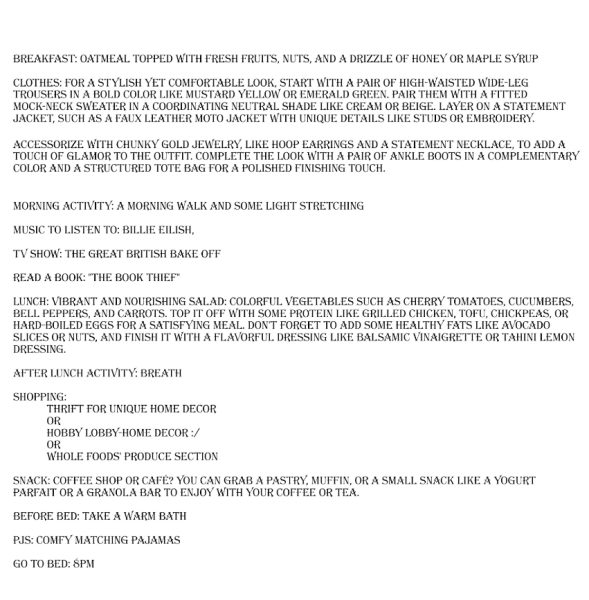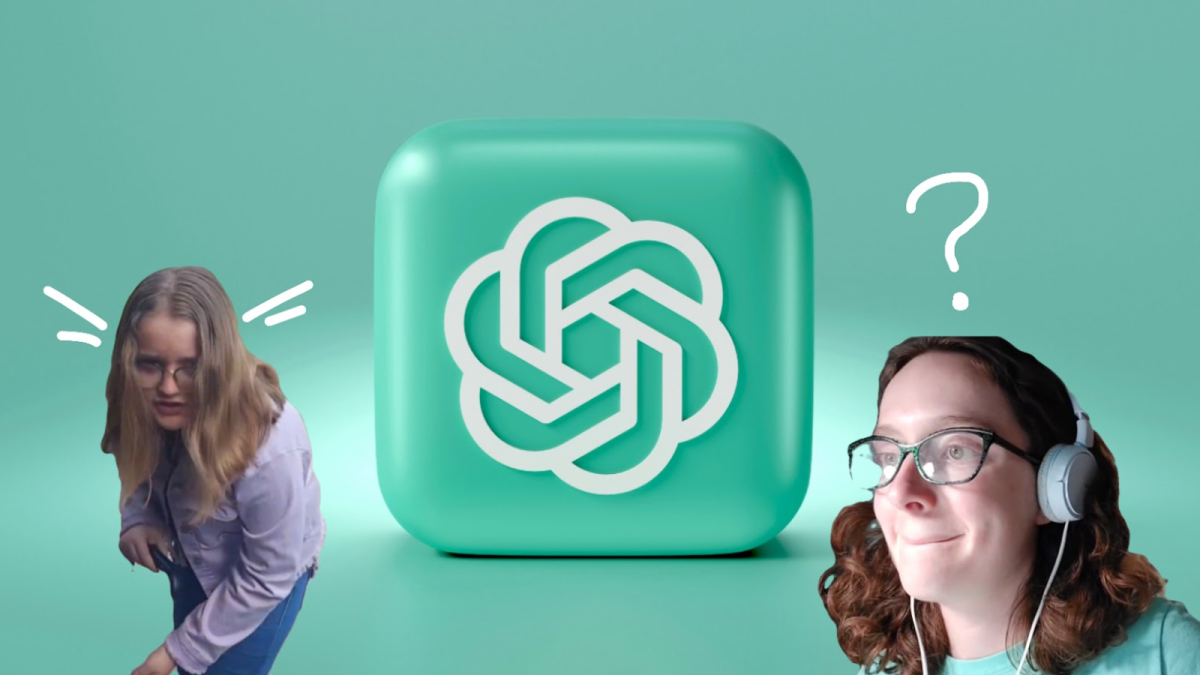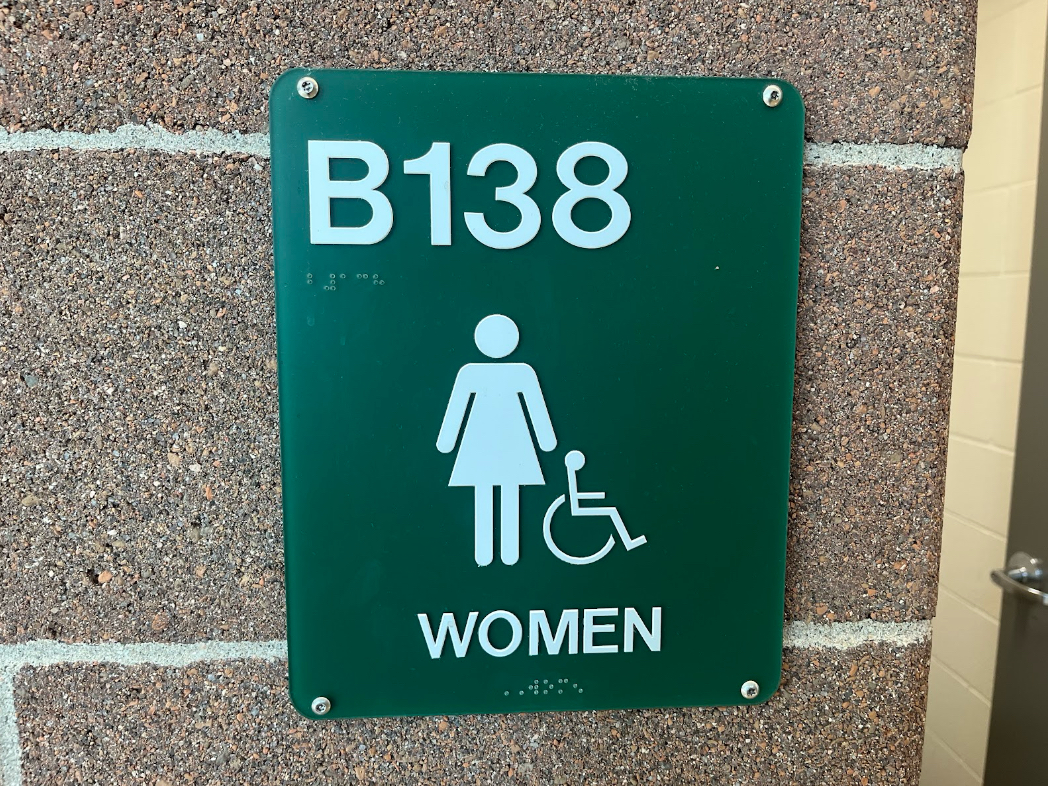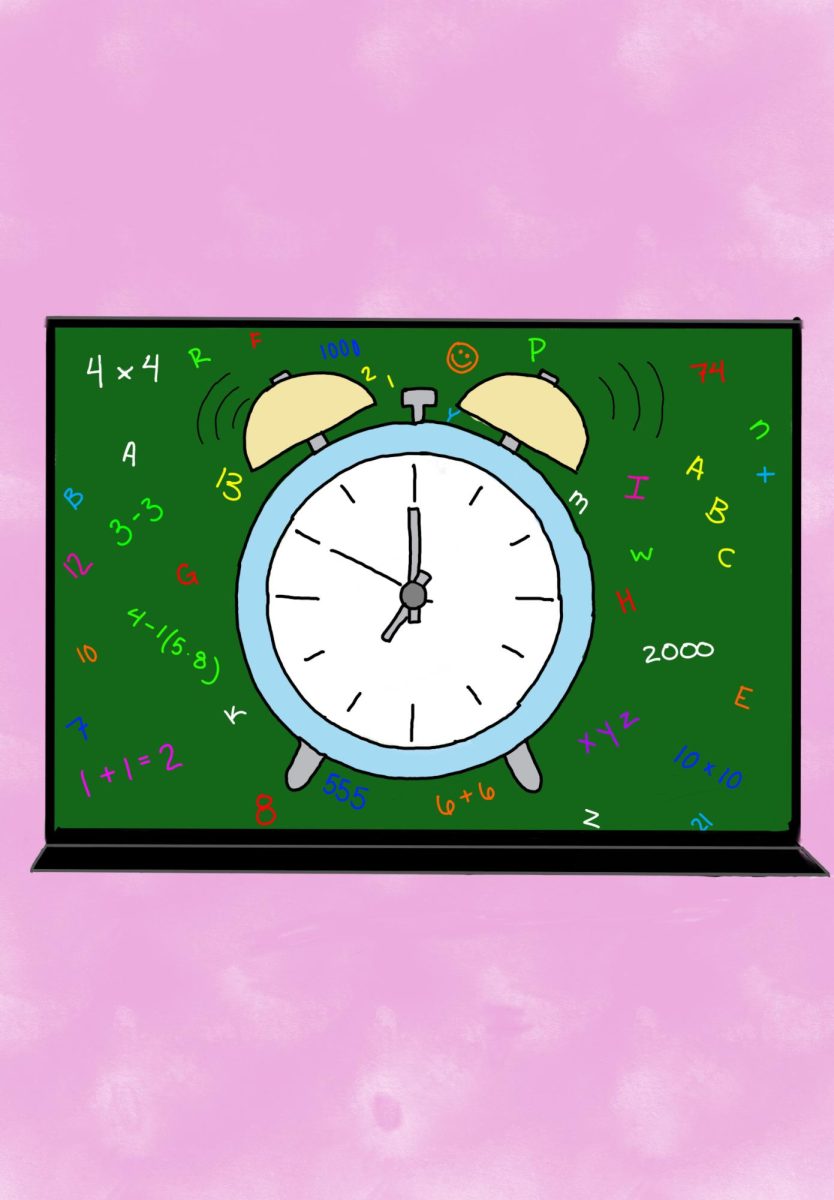A little over a month ago, my sister and I decided to conduct a little experiment that we coined “Robot Day” (by my sister and I, I mean, I forced her to join me). We were sitting in our basement living room watching YouTube on our Roku TV. On that day, a video popped up. It was one of those 2016 trends where YouTubers would let Evie Bot or Boy Bot (AI chat bots) plan their day. I looked over at my sister and said, “Hey, we should try something like that,” so we put our heads together and came up with a plan.
We came up with a certain genre of daily activities we and others may have in their schedules. One by one, we asked Chat GPT what we should do for each category. AI, especially Chat GPT, pulls from the whole World Wide Web in a matter of seconds to come up with answers. This means that this artificial intelligence only receives its intelligence from what people present most online about themselves. In the back of my mind, I saw this as an interesting social experiment. Potentially, this schedule could reveal societal habits and what is actually realistic on the internet and in the media.
In a boiled-down sense, Chat GPT gave us a schedule for millennial hipsters. That point became very clear. There was not a lick of bacon—or comfy shorts—or band tees in sight. After receiving our schedule, plotted by this robot, my sister and I looked at each other with an apprehensive giggle. What had we done? We aren’t hipsters. I don’t think I’ve ever had avocado toast in my life. This simplification just goes to show that there is a high millennial-hipster precedent in the media.
Were we overreacting to the “monstrosity” of this robot’s intrusion into human culture? A little bit. For reference purposes, here is how Chat GPT created our schedule:

As a cherry on top, I pretended to be a vlogger during that whole experience. There is a video depicting our day and how it went.
To be honest, though some of the activities Chat GPT planned were a little stupid, there were some that were actually quite enjoyable. A lot of the suggestions were for healthy food and healthy habits like going for a walk, stretching, and taking deep breaths. Going thrifting and to craft stores were really fun for Savanah and me. I know it is naïve to assume everyone would enjoy those hobbies, but Chat GPT hit the hammer right on the nail, at least for our crafty side.
The clothes could be neat in certain situations, but the layering and lack of flexible material were not practical for daily life, especially in a society that is constantly changing. We could barely complete our stretches in the clothing that was picked out for us, and we asked for casual and regularly worn clothes. Apparently, AI thinks that it’s always urban fashion week.
Generally, I like to go to local coffee shops, but Savanah and I had gift cards to Starbucks, so we ended our errands there. When I got back home, I had a pile of homework waiting for me. AI does not allot school work and studying into its daily schedule for humans. This made it next to impossible to make it to bed by eight p.m. I was able to take part in all aspects of the AI-generated day except for bedtime. I spent a substantial amount of time finishing my ten-page essay draft that was due the next day.
The ending verdict to this social experiment resulted in some interesting experiences. Savanah and I were able to spend time together, and I had a chance to try to talk to her about important values and share laughs with her before I move away from home for college. Ultimately, ChatGPT is full of stereotypes pertaining to the American youth lifestyle, often incorporating trendy activities found on the internet. It has a narrower perspective and database than some may often consider. Just like people in real life, AI has a narrow perspective on how other people function and what their day-to-day lives look like.














